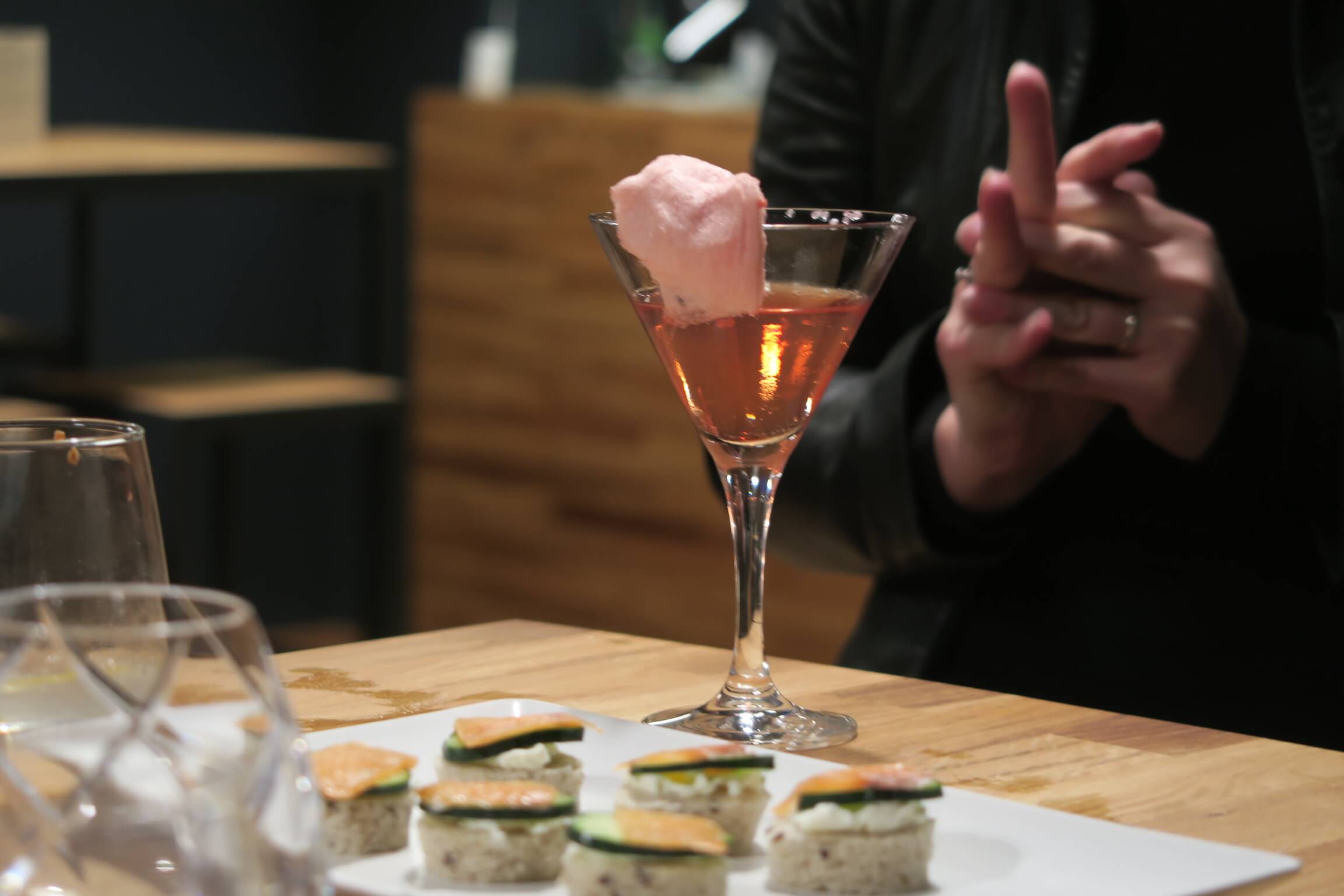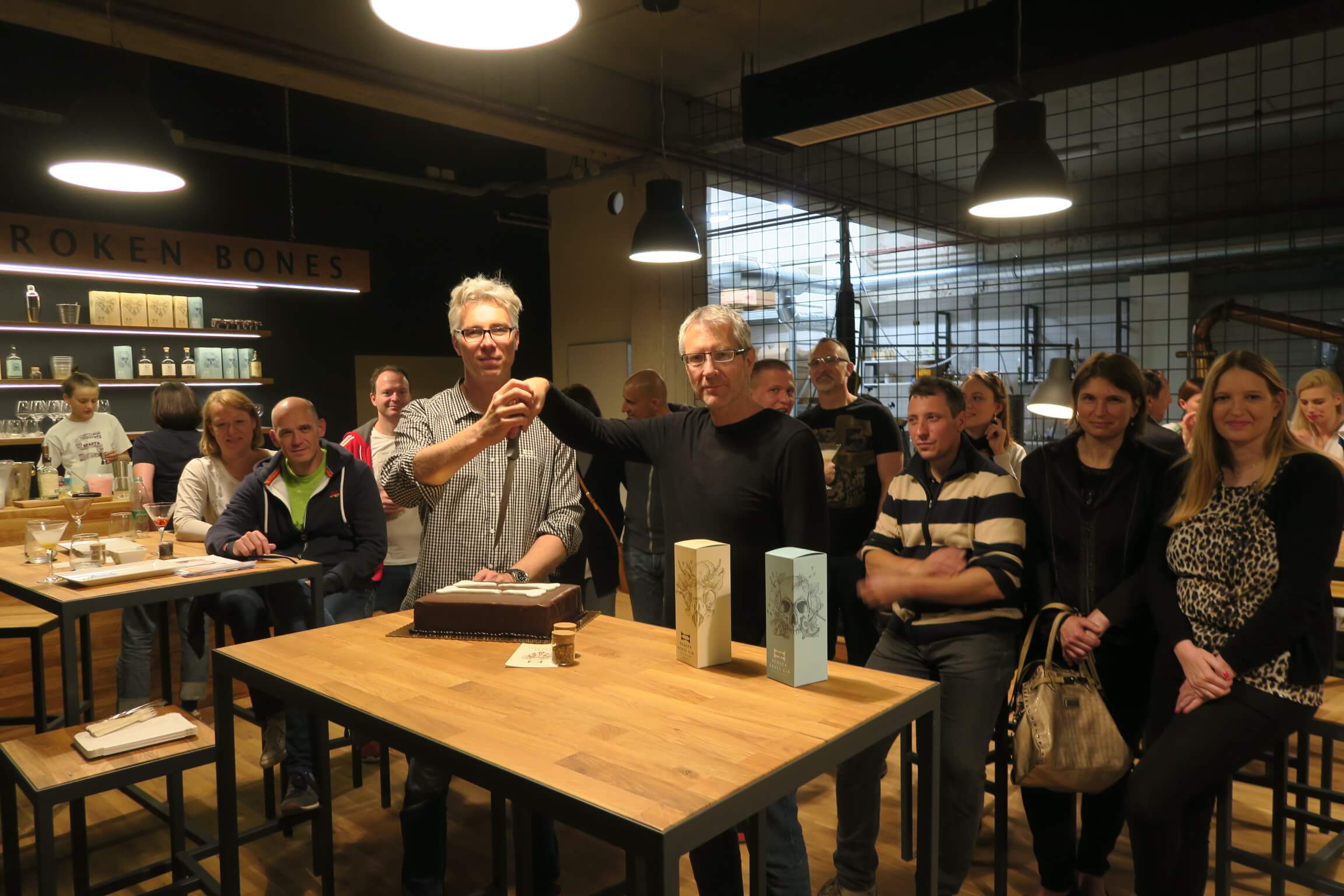Made in Slovenia
STA, 8 September 2019 - Several thousand firefighters and other visitors gathered in Metlika on Sunday to celebrate the 150th anniversary of firefighting in Slovenia, marking the day in 1869 when the first volunteer fire brigade was founded in Metlika.
The first fire brigade on Slovenian territory was established on 19 September at the proposal of landowner Josip Savinšek. The following year fire brigades started cropping up in other places, including Laško, Ljubljana and Ptuj.
A century and a half later, Slovenia boasts what is seen as one of the best networks of volunteer fire brigades in the world, with over 1,300 local volunteer fire brigades bringing together 162,000 firefighters, almost a tenth of the country's population.
There are also 700 professional firefighters in 13 professional fire brigades.
Delivering the keynote at the ceremony in Metlika, Prime Minister Marjan Šarec, himself a volunteer firefighter in his hometown of Kamnik, stressed that the umbrella Firefighters' Union was the biggest humanitarian organisation in Slovenia.
"Being a firefighter is an honour, but it is also a responsibility ... when all others give up, leave or become scared, the firefighter stays," he said, describing Slovenian firefighters as the envy of the world.
STA, 26 August 2019 - Boris Pahor, one of the most celebrated Slovenian writers, turned 106 on Monday, celebrating his birthday at what has become a traditional event at Ljubljana's Konzorcij bookshop.
A strong advocate of Slovenian identity and language, Pahor was born in Trieste in what was the Austro-Hungarian Empire, and still lives in this city in Italy.
He was a witness of Fascist violence against Slovenians, and survived a Nazi concentration camp, the experience he described in his celebrated novel Nekropola.
When it was first published in Slovenian in 1967, Necropolis was largely overlooked, but was in 1990 translated to French to critical acclaim.
Pahor took the opportunity of today's event to thank Slovenian philosopher Evgen Bavčar for his efforts for the French translation, which was followed by translations into a number of other languages.
"Today Nekropola is a world-famous novel," said Pahor, referring to himself as "a pilgrim among shadows" as is the title of the French translation.
Still considering himself "a citizen of the concentration camp", he said he had first visited the former "concentration camp some 50 kilometres from Salzburg where doctors dissected Jews to see if their brain is any different from that of European people", ten years after the end of the war.
Pahor has dedicated his life to warning about the pitfalls of totalitarian regimes and to promoting confidence based on a good knowledge of history and one's own identity.
Writer Peter Kovačič Peršin said Pahor had started writing as "an apostle of Sloveneness in an environment which is still not fond of him", and as "a messenger" who also wanted to revive the awareness of Slovenian identity and freedom among Slovenians in Slovenia.
"Your work has validated the greatness of Slovenian people, Slovenian national and Slovenian language," Kovačič Peršin told the packed bookshop, noting the love of the mother tongue was the recurring theme of Pahor's books.
Culture Minister Zoran Poznič praised Pahor as a witness who "draws attention to what went wrong in the 20th century so that it would not be repeated in the 21st century".
The head of the Slovenian Book Agency, Renata Zamida, said many abroad considered him the embodiment of literary creativity in Slovenia, while here he is considered the personification of national pride.
Many foreign journalists consider Pahor "a miracle of historical memory", Zamida said at the event, organised by Mladinska Knjiga and Cankarjeva Založba, and also attended by Minister for Slovenians Abroad Peter Česnik and Slovenian Senator in the Italian parliament Tatjana Rojc.
Pahor has received many awards and honours for his work, including the Prešeren Prize in 1992 and the Silver Order of Merit in 2000. In 2007, he was presented with the Legion of Honour, France's highest state order.
The Slovenian avant-garde folk trio Širom, made up of Iztok Koren, Ana Kravanja and Samo Kutin, have been getting good reviews for their latest album, A Universe That Roasts Blossoms For A Horse, so we thought we’d put together a post with a few videos to familiarise you with their “imaginary folk music”. You can follow the band on Facebook. They’re about to start a European tour, with their next local show on 3 October (2019) at Ljubljana’s Kino Šiška.
This year’s Salon Privé, to be held at Blenheim Palace in the UK from 5 to 8 September (2019), will have some Slovenian flair among the usual classic cars, supercars and hypercars, with the carmaker Tushek set to show off its new TS 900 H Apex.
What is a hypercar? In simple terms it’s an elite supercar, a cut above the rest, with special features and produced in ultra-limited numbers, and the TS 900 H Apex is in this class for numerous reasons. For one it’s very light, with a kerb-weight of just 1410kg, enabled by the use of carbon fibre. For another its powered by a hybrid system that pairs two front-mounted electric motors with a rear-mounted supercharged 4.2-litre V8 engine that produces a power to weight ratio of 502kW per tonne. With this Tushek claims the vehicle can go from 0-60mph (0-96 km per hour) in 2.5 seconds, with a top speed of 380 km per hour. In addition to these and other special features, the TS 900 H Apex features a striking design with a removable top and scissor doors, with some reports indicating a price tag of around US$1.4 million.
Tushek was established in 2012 by Aljosa Tushek, a Slovenian racing driver who now leads the company’s team in its efforts to produce “the ultimate hypercar”. You can learn more about the company here.
STA, 30 July 2019 - Slovenian researchers have discovered a new molecular mechanism of action in ketamine that they say opens up new potential for development of fast-acting antidepressants.
Ketamine, a medication used primarily for starting and maintaining anaesthesia, is already applied to treat depression in the US but not yet in Europe.
However, the discovery, made by researchers at the Ljubljana Faculty of Medicine, the biomedical centre Celica and the National Institute of Chemistry, could accelerate making the drug available as an antidepressant soon in Europe as well.
"Before a medication can be placed on the market and starts being prescribed by doctors, it's necessary to obtain appropriate clearances, and these also depend on knowing the mechanism of action," Robert Zorec, a co-author of the study told a press conference at the Faculty of Medicine on Tuesday.
The difference between ketamine and other medications used in treating depression is in its mechanism of action. While other antidepressants take weeks to take effect, ketamine provides relief within hours and a single dosage may have beneficial and long-lasting effects in treating depressive disorders.
The Slovenian researchers' discovery has sparked major interest in psychiatry due to a lack of effective, fast-acting antidepressants. The mechanism of action in ketamine, which is also abused recreationally as an illicit drug, had not been known so far.
Matjaž Stenovec of the Ljubljana Faculty of Medicine said that depression is on the rise in Slovenia with one in nine adults affected. The rate in the US is lower, at 7.1%.
The abstract and a (paid) link the the full paper, titled "Astroglial Mechanisms of Ketamine Action Include Reduced Mobility of Kir4.1-Carrying Vesicles", can be found here.
July 25, 2019
The ethical luxury brand Benedetti Life, established by a renowned Slovenian designer Mateja Benedetti, presented its latest collection alongside Escada at the Costa Brava Fashion Week in Spain last weekend. The event took place at the Alabriga Hotel, located at the upmarket S’agaro resort on the Costa Brava, popular among international celebrity visitors since the 1920s, when the area was first developed.
At the event Mateja Benedetti spoke about the ethical approach to modern luxury and then presented her work in a show featuring Benedetti Life Parrots’ Poetry collection, NIIRO Jewellery and Woodstock Sunglasses by Benedetti Life, all brands taking Slovenian style to the next level internationally.
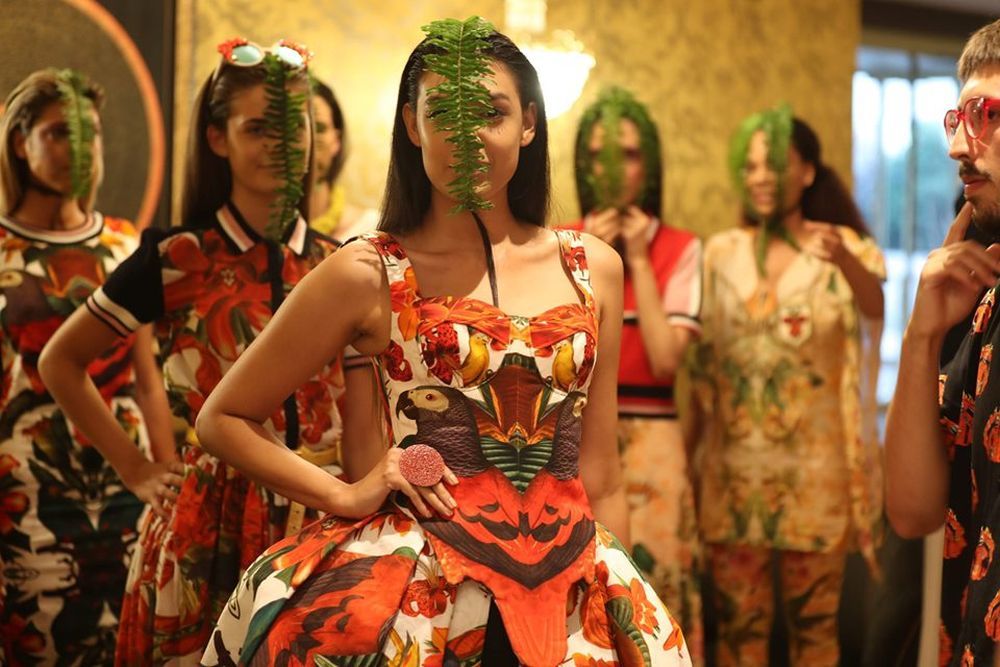

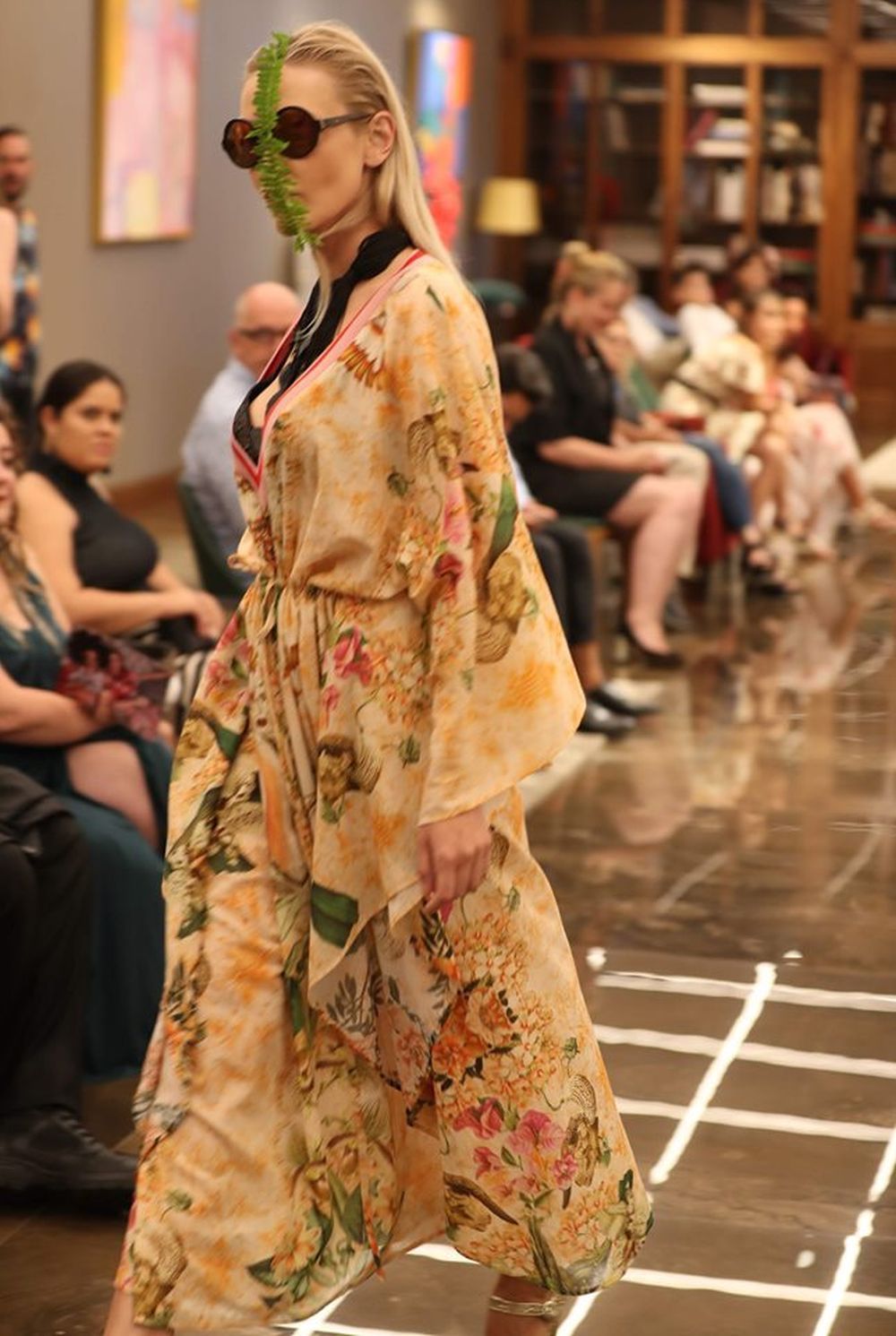



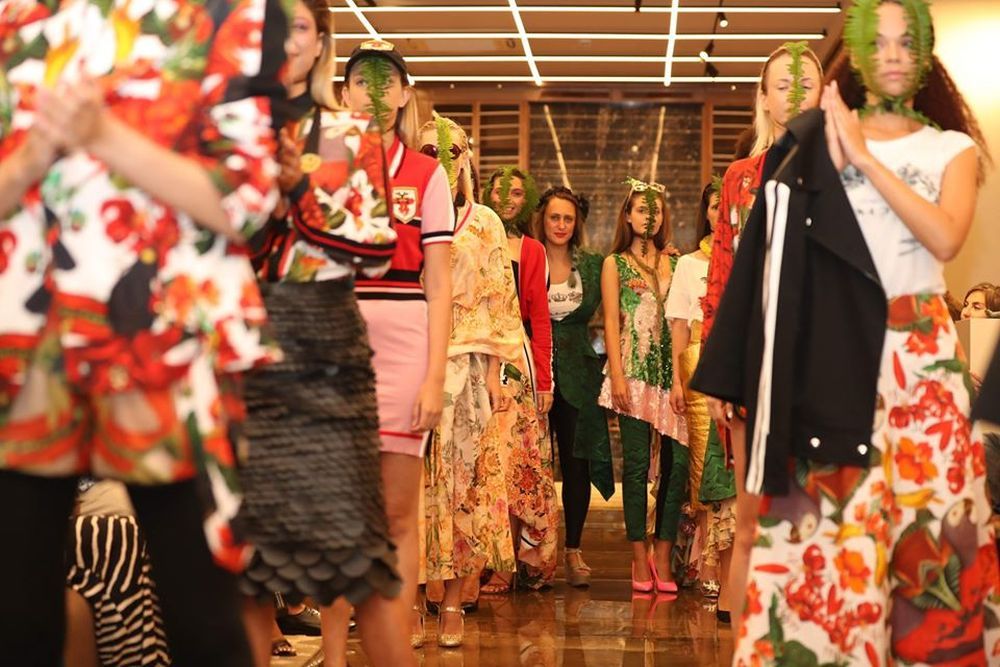
STA, 22 July 2019 - Slovenia boasts thirteen native breeds of domestic animals, with most of them considered endangered or vulnerable, so their preservation is of national importance. A network to support breeders, set up in 2016, features a dozen farms and seven agricultural centres.
There are four native breeds of sheep in Slovenia, with the Jezersko-Solčava coming from northern Slovenia, Belokranjska Pramenka from the south-eastern region of Bela Krajina, the Bovec from the upper valley of the Soča river, and Istrska Pramenka from Kras and Istria.
Other native breeds include the Drežnica goat, the Krško Polje pig, Carniolan honeybee, the Štajerska chicken and the Cika cow.
The three native Slovenian breeds of horses are the Posavje, the Lipica and the Slovenian cold-blooded horse.
Preserving these breeds in their own local environment is in line with the Convention on Biological Diversity, the programme for development of Slovenian agriculture and rural areas, and the long-term programme of protecting biological diversity in Slovenian animal husbandry.
In 2016, the Public Service of Animal Husbandry Gene Bank, which covers the field on the national level, set up the Slovenian network of breeders of endangered native breeds. The same year, the first farms received certificates for breeding endangered native animals.
Currently, 12 farms and seven agricultural centres have the certificates.
"The number of such farms has been increasing very slowly, but our goal is not so much to have more of such farms but to improve the quality of promotion and preservation (of the animals), which is the basic mission of these farms," Danijela Bojkovski and Metka Žan of the Public Service of Animal Husbandry Gene Bank told the STA.
"We would primarily like the wider public to understand how important it is to preserve native breeds and use their products," the pair said.
To get the certificate, a farm must breed at least three native breeds of domestic animals. It can also breed other domestic animals, but at least half of the animals have to be of native breeds.
The agricultural centres breed native domestic animals mainly for educational and tourist purposes.
Both types of farms are encouraged to market the products of the native breeds, follow the guidelines of organic farming and also preserve native plants.
The farms can receive state subsidies for breeding endangered native breeds as part of the programme for development of Slovenian rural areas.
The Karst Shepherd, a breed of dog of the livestock guardian type, is also a native breed whose conservation status is critical.
A breeding program was accepted in 2009 to boost the number of dogs, improve their characteristics and preserve their genetic diversity.
STA, 21 July 2019 - The Culture Ministry has recently added a number of activities or characteristics in the Slovenian intangible cultural heritage register, including building and rowing Pletna boats on Lake Bled, mobile beekeeping and the Prekmurje dialect.
Building and handling Pletna boats is a skill passed on from one generation to another and an established local tradition popular among visitors of the Bled lakeside resort.
The Bled island was a pilgrimage site already in the 12th century, with locals setting up piers and transporting people to the island. Even back then, they used boats they built themselves.
In the 18th century Habsburg dominions ruler Maria Theresa granted local farmers the rights to perform lake transports as a source of some extra money.
This typical Bled activity has stayed alive until today due to the development of tourism, with the shape of the Pletna boat changing over time.
The current form was designed by the locals at the turn of the 19th century, based on similar boats which were used on central European lakes.
After the First World War, an awning was added to the boat to shelter visitors from the sun and rain.
The Pletna boat used to be shorter but today the 8-metre vessel can transport up to 18 passengers. The boat's skipper or Pletnar rows and steers the boat with two oars, whose length amounts to 3 metre, while standing.
Only a few master craftsmen from Bled are still building Pletna boats, with every one of these vessels being an original. The lifespan for the boats is up to 50 years if they are being regularly maintained.
According to the Culture Ministry, the Pletna transport is key for preserving the local environment and the fragile Lake Bled ecosystem.
Apart from that, building and handling those boats have become the local community's trademark and part of its identity.
According to the head of the Pletna Bled boating association Gregor Pazlar, there are currently 23 Pletna skippers. They were the ones who initiated the process of entering the local tradition in the intangible cultural heritage register.
"The Pletna activities and skill are something special, since those boats are representative of Lake Bled. It's an activity that can be found only here," said Pazlar. Four years ago Pletna skippers already registered the Pletna trademark and name.
The Slovenian intangible cultural heritage register currently includes 72 units and 200 intangible cultural heritage holders.
Apart from the skill of building and rowing Pletna boats, another addition is mobile beekeeping, which stands for transporting bees in their hives to make a better use of bee pasture.
Yet another, addition, the Prekmurje dialect is part of the Pannonian dialect group, consisting of three subdialects - the Goričko, Ravensko and Dolinsko ones.
Until the standardisation of the Slovenian literary norm in the 19th century, the Prekmurje dialect used to be a regional literary variant of Slovenian.
STA, 19 July 2019 - After Neil Armstrong claimed the Moon for the very first time 50 years ago, space has been visited by four US astronauts of Slovenian descent - Ronald Šega, Jerry Linenger, Sunita Williams and Randy Bresnik.

Ronald Šega was born in 1952 in Cleveland, Ohio to Slovenian immigrants. His father hailed from Loški Potok in southern Slovenia.
He became one of NASA's astronauts in 1991. Three years later he embarked on his first mission, STS-60, which was coincidentally also the first mission of the US-Russian Shuttle-Mir Program.
In 1996, Šega was part of the STS-76 mission, a flight which marked the third time the US Shuttle docked with the Russian Space Station Mir (Peace) as part of the joint program. The 66-year old has logged 17 days in space altogether.

Jerry Linenger was born in 1955 in Eastpointe, Michigan. His maternal grandparents immigrated to the US from Tržič and Radovljica in northern Slovenia.
The 64-year-old joined NASA in 1992 and travelled into space for the first time in 1994, spending almost 11 days there.
After completing his training in a Russian space centre, he travelled to Space Station Mir in 1997 and spent 132 days there, which was at that time a men's record.

Sunita Williams, born in 1965 in Euclid, Ohio to a Slovenian mother and an Indian father, was picked by NASA for its astronaut programme in 1998 and was later assigned to the International Space Station (ISS).
The first time she travelled into space was in 2006, when she spent 192 days there, setting a then women's record. Her second time flying into space was in 2012, when she stayed there for four months.
The 53-year-old formerly held the records for a total number of spacewalks by a woman (seven) and most spacewalk time for a woman (50 hours, 40 minutes).
She became the first person to run a marathon in space in 2007. Five years later she was also the first to do a triathlon there.

Randy Bresnik, who traces his Slovenian ancestry to Ljubno ob Savinji and Luče in northern Slovenia, was born in 1967 in Fort Knox, Kentucky. He was selected by NASA in 2004 and met legendary Armstrong on his first day at a new job.
The 51-year-old has completed two missions at the ISS, in 2009 and 2017. During the first one, he did two spacewalks, which altogether lasted twelve hours.
Two years ago he spent 139 days in space and completed three spacewalks, walking in outer space for some 20 hours.
All four of them have paid a visit to Slovenia and taken Slovenian symbols to space, including a national flag and a kranjska klobasa sausage.
The Slovenian gin scene is booming, helped along by the country’s long history of distillation and production of juniper-based schnapps (brinjevec or brinavec), as well as it’s growing reputation as a culinary destination.
One of the dozen or so gin producers that started business in recent years is Broken Bones, with a name that comes from when the owners, Borut and Boštjan, both had accidents when working with their first whisky barrels, resulting in a broken leg and broken nose.
I’d briefly met Boštjan at various gin-related events around town, but curious to know more about the first gin maker in Ljubljana, and the first new distillery in the capital in some 50 years, I decided to visit the place myself, an experience that’s now open to all.
It’s a short drive or cycle from the centre of town, at 132 Tršaska cesta, just between a Toyota showroom and a Petrol station. Since there are samples on offer you might prefer to get a bus, with both 6 and 6b taking you there from Slovenska cesta.
From the outside it’s easy to miss. Photo: JL Flanner
It's a small place, divided into a clean, white tiled distillery and a wood and leather showroom / store / bar. Playing the background is a sound collage of distillery sounds, put together by a DJ Boštjan knows from his time when he and the legendary Umek helped kickstart the techno scene in Slovenia, releasing records putting on club nights at Nexus and K4, two or three lifetimes ago.
Photo: JL Flanner
What’s your background?
Computer programming, a very different business. I worked in that for years on various projects. For example, I started the bolha.com, the online market, before eventually selling that, and then there was Napovednik. I was still working on that until recently, in fact, but Broken Bones (BB) was taking up more of my time, so now this is it.
How did you and Borut get into distilling?
It was a long process. I’m a technical guy, and my wife’s family has a vineyard, so I’ve been working with wine, thinking about wine for over 20 years. I also got into making beer, and was interested in whisky, starting from about eight years ago. But these were hobbies, not businesses.
At the same time my partner in Broken Bones, Borut, had been importing whisky in Slovenia since 1991, when the country became independent and that kind of business was possible. He also has a family history of distilling, so that was a hobby of his. He was making schnapps, and then he started making absinthe, one of the first producers in Slovenia.
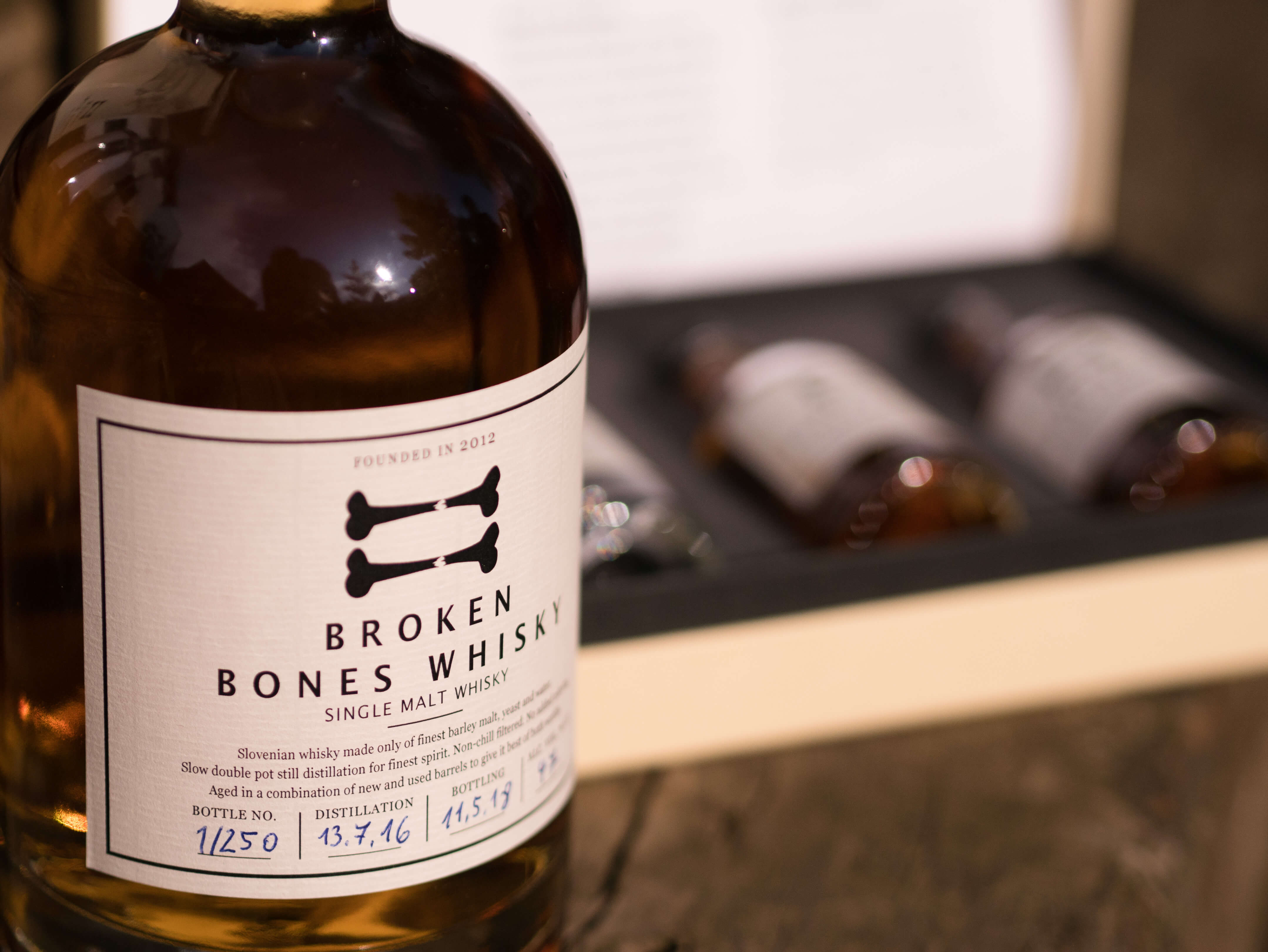
Broken Bones still makes small batches of whisky
So when we started working together it was in my basement in Kodeljevo, and we made our own still, for whisky, soldering the parts together ourselves, one that we still use here.
But whisky takes a long time, and it can be a very long time aging in barrels before you get a good whisky, because the raw whisky – the new make, the colourless liquid that comes out of the still, is really not something anybody would like to drink. Gin, on the other hand, is a lot faster to produce, with no real aging. It just needs to rest for a month or so and it’s ready to drink, so from a production point of view it’s a lot more appealing. We knew that many small whisky distillers were making gin precisely because of that, but not really liking classical gins we were not interested in making them. This changed a couple of years ago when we discovered the modern styles of gin by going to whisky events in London, where we learned about modern, much more interesting and aromatic gin, the kind from, say, Bombay Sapphire onwards, and that really started us thinking, especially because Slovenia is well known for its juniper berries.
We started experimenting with gin. Did about a hundred distillations on a small scale, studying a lot of the literature and using the knowledge we already gained through working with whisky. We experimented with botanicals, their ratios and different still designs. It took us about a year to get to the recipe we really liked.
The distillery is open for small groups, where you can sample the drinks along with some appropriate snacks
How long has Broken Bones been open?
Since May 2018, and we were very lucky when we launched. It was just when the gin craze was getting started here, with more producers, more bars and events.
I have to say that the craft beer scene really helped in this, too. Before then people were just drinking local lager, not thinking much about anything else but price. Then with craft beer things became more like wine. People were interested in what’s new, what’s next, and they also understood that you have to pay more for quality. So when people started making craft gin in Slovenia there was an understanding that this could be an interesting product, that it was worth exploring, and when you found something you really liked also that it was something worth paying for.

What’s the response been like?
Very good, both here and abroad. I’ve been going to London quite a lot, showing our gins to various bars, and we have a distributor in the UK now, as well as several awards. We currently have a 600 litre still, more than we need, but the way the business is growing it may be too small soon.
What ingredients do you use, and how are the London and Navy gins different?
We start off with a neutral alcohol, made of molasses, although grain is more common in the industry. For the botanicals we use the same in both our London Dry and Navy gins. Of course there’s juniper berries, but also lemon and cardamom, among other things, and then, as a Slovenian element, rosehip and linden. The Navy gin is stronger, with more alcohol, and that is why it can also carry more flavour it also has more botanicals.
We’re very busy at the moment, we only moved into this site at the start of May, but as things are settling down we should be able to launch something new soon, Old Tom Gin, with added linden tree flower honey and matured in Slovenian oak casks. Then we have a few more things we’re planning, including one that’s a more distinctive, Ljubljana gin, but that’s for another day.
And where can people find you?
You can find our gin at various bars and stores in Slovenia and the UK, but if you’re in Ljubljana then perhaps the best place is our distillery shop or the Central Market. Monday to Saturday, the part by the arcades that connects the two squares. Here you’ll find a stall where you can sample the gin. If you’d like a fuller measure, perhaps with a mixer, then the nearby Magda bar will do you. Elsewhere in town we’ve been working closely with Pritljičje and Kolribi, and if you’re looking for something a little different then Sveti Florijan, in the Old Town, makes a gin dessert.
People can also come here, for the Broken Bones Experience. We didn’t just want to do a classical tour of the distillery as such, although you obviously see it as well. But if you make a visit then you’ll learn about the history of gin, the process of distillation, the different kinds of gin, and, of most importantly, you’ll get to sample some, including in several cocktails from the selection of recipes created by Tina Pirnat especially for our gin accompanied with snacks, and try our gin pralines.
You can see the cocktail recipes here, with the one I tried below, while you can learn more about the Broken Bones Experience here.
The Martini Espresso with a Gin Twist
Ingredients:
- Broken Bones Gin - 30 ml
- Kahlua - 30 ml
- Espresso coffee - 30 ml
- Simple syrup - half a teaspoon
Preparation
- Shake and strain
STA, 15 July 2019 - A group of researchers from the Jožef Stefan Institute has discovered what they describe as an entirely new kind of matter that cannot be understood with existing physics and which opens up an entirely new field. Their paper was published in the latest issue of Nature Materials.
Conducting experiments designed to create new kinds of quantum materials under non-equilibrium conditions, the researchers used short laser pulses to create an unusually thick amorphous matter in which electrons become jammed because of strong interaction.
The researchers say the discovery, which falls in the domain of quantum physics, is fundamentally important in that it opens a new area of research that represents a huge challenge for the present state-of-the-art in quantum physics.
The jamming of electrons may occur whenever fundamental particles undergo fast compression at high density, for example in nuclei or in neutron stars. It also has potential practical utility since it can be controlled.
The research team discovered the phenomenon in 2016 but then needed three years to describe it and experimentally confirm it.
The new phenomenon has been dubbed "electron jamming" and is described in detail in the paper "Quantum jamming transition to a correlated electron glass in 1T-TaS 2".





